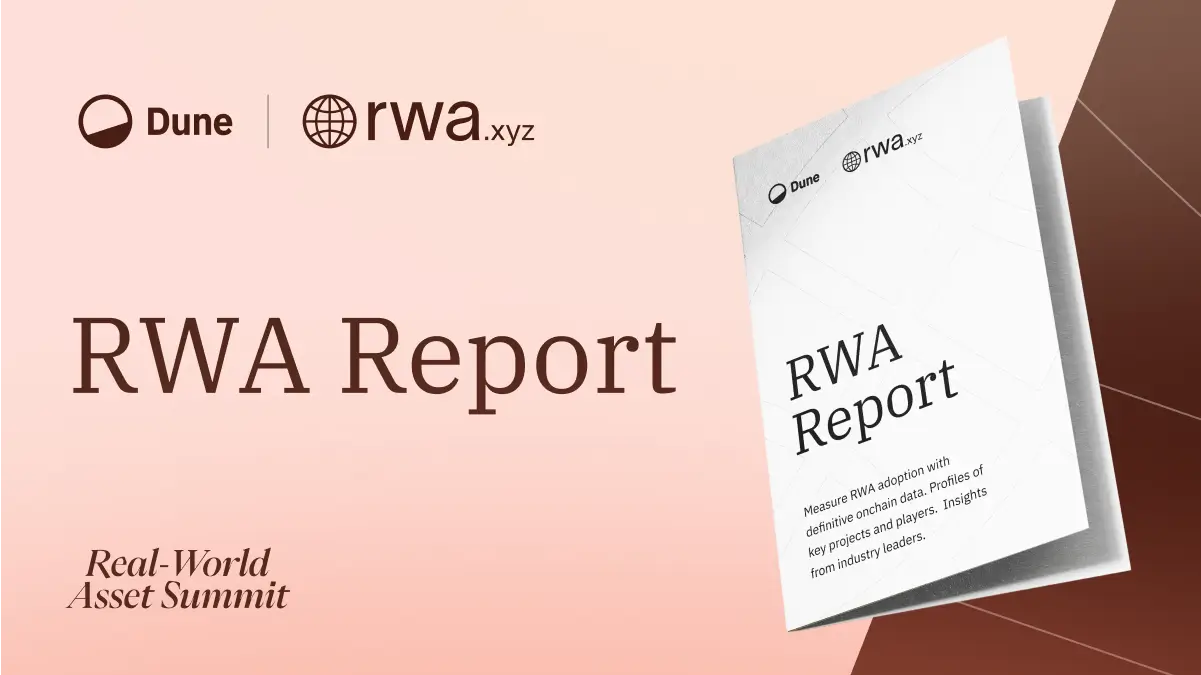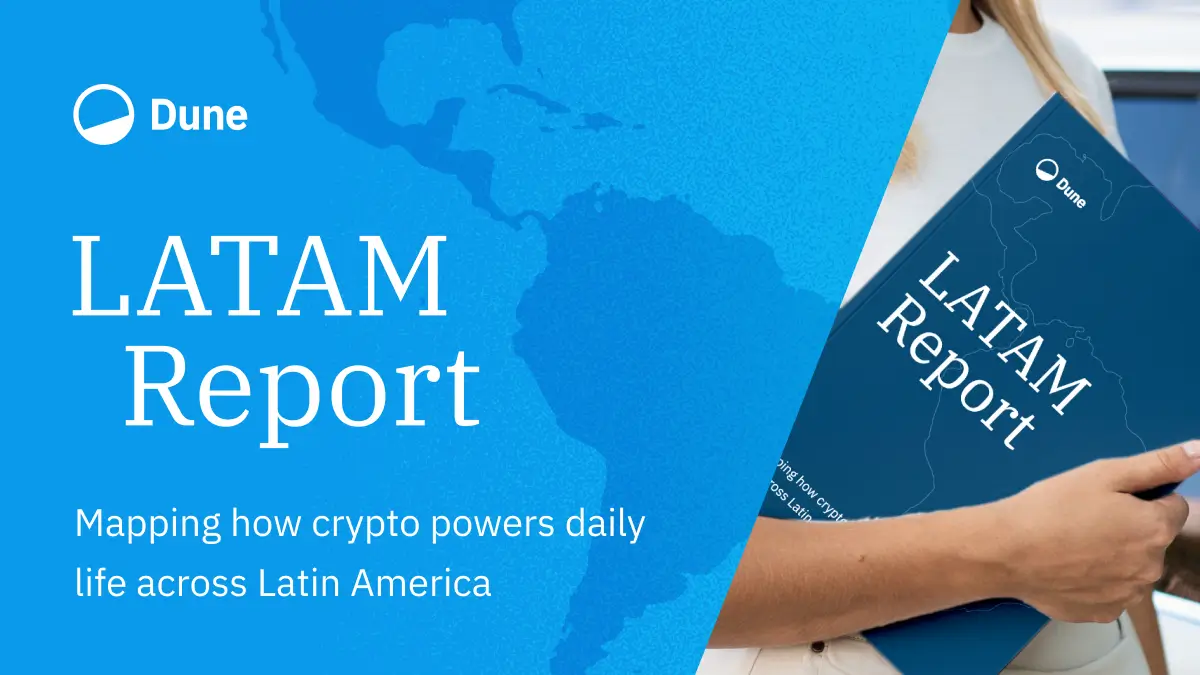Dune Index: Tracking Real Blockchain Adoption
What's really going on with the blockchain industry?
Exclusive content

Download Content


The Dune Index is the only metric that accurately tracks real blockchain industry adoption. While many rely on metrics like Price and Total Value Locked (TVL) to approximate adoption, these fail to capture actual on-chain activity. Other methods attempt to track adoption using several disparate metrics, which are difficult to interpret collectively. Additionally, naive calculations—such as simple address counts and gross transaction volumes—often introduce noise, making them unreliable indicators of adoption.
How the Dune Index Solves These Issues
The Dune Index addresses these shortcomings by combining fundamental adoption metrics into a single, unified index. This enables the industry to track real activity movements and interpret price fluctuations within this context. Furthermore, the index spans multiple blockchains, providing insights into blockchain adoption as a whole. This cross-chain analysis allows for better comparisons and tracking of trends as various blockchains grow and decline over time.
Key Insights from the Dune Index
- Adoption in the Latest Bull Run
The latest bull run has driven adoption levels back to previous highs. The Dune Index hit a weekly average high of 88 in mid-November 2024, comparable to 87 in mid-November 2021 and 81 in May 2021.

- Contextualizing Asset Prices
The index serves as a useful sense check for volatile asset prices. As prices rise, it helps determine whether adoption is increasing in tandem. It also provides historical comparisons to assess whether prices are justified by actual usage.- Example: Solana (SOL)
While SOL’s price is currently at the same level as in 2021, adoption has far exceeded previous levels. This suggests that Solana’s current valuation is more reflective of real-world activity than during its last boom, reinforcing positive community sentiment.
- Example: Solana (SOL)


- Example: Bitcoin (BTC)
Bitcoin, on the other hand, is priced significantly above previous peaks while adoption remains similar to past highs. This likely reflects Bitcoin’s growing role as a store of value rather than a medium of exchange. However, since blockchain adoption and price movements are correlated, tracking adoption trends could offer useful insights.


- Understanding Blockchain Growth and Market Share
With an increasing number of blockchains, the Dune Index provides essential context for comparing their size and growth. By evaluating each chain’s contribution to overall adoption, we gain a clearer picture of their impact.
Top Blockchains by Adoption
- The leading chains on the index are Solana, Tron, Ethereum, and Bitcoin.

- Mid-tier contributors include BNB Chain, Base, Polygon, and Arbitrum, each representing 1%–5% of the total index.

- Emerging and growing blockchains include OP Mainnet, Avalanche-c, Ronin, and Mantle which are currently on an upward trajectory.
“The Dune Index is one of the most important indices we have been monitoring.Taking a holistic approach to measure real usage and economic significance of a blockchain ecosystem, it provides an objective, normalized comparison across leading blockchains. Being fully verifiable on-chain, it will allow Ronin’s ascendance in the overall blockchain landscape to be seen transparently.” Bailey Tan, Head of Ronin Ecosystem.
Methodology: How the Dune Index Works
1. Fees: View more details here.
2. Transfers: Tracking Real On-Chain Movement
Many transactions involve multiple transfers and participants due to complex financial maneuvers. A party may send and receive funds multiple times within a transaction, making gross transfer values misleading. Instead, we calculate net value transferred, ensuring a more accurate picture of real economic activity.
- Solana-Specific Adjustments
Unlike EVM chains, where complex maneuvers occur within a single transaction, Solana users often spread actions across multiple transactions. Since Solana transactions are cheap and have a data size limit, we calculate net transfers per day rather than per transaction to avoid overestimating activity. - UTXO Blockchains (Bitcoin, Litecoin, etc.)
UTXO-based chains include “change” outputs, where unspent funds are sent back to the sender. Our method naturally nets out change from the calculation, reducing inflation of transfer values. However, detecting change addresses is not always possible, meaning our UTXO transfer values may be slightly overcounted. Despite this, our approach eliminates 80% of gross transfer value, providing a more precise measure of real adoption. - Non-Fungible Tokens (NFTs)
We do not net out NFT transfers as they represent distinct, non-fungible assets.
3. Defining Parties and Transactions
- Identifying Unique Parties
A party is not defined solely by a single address, as individuals and organizations often control multiple addresses. Our Owner Labels data helps group addresses under the same entity, primarily for larger organizations. For individuals, addresses are typically treated separately. - Transaction Counting Criteria
We count each transaction where at least $1 is transferred, ensuring that microtransactions and irrelevant activity do not skew the index. Since transaction structures vary by blockchain, we weight them accordingly:
- Fees and Transfers each make up 45% of the index.
- Transactions contribute 10% since their significance differs across chains.
- Solana’s Transaction Behavior
On Solana, users often execute multiple transactions for actions that would be consolidated into a single transaction on EVM chains. This makes Solana transaction counts more comparable to Ethereum transfer counts. While transactions are an essential component of on-chain activity, we weight them lower because they represent varying types of interactions.
- Fees and Transfers each make up 45% of the index.
The Dune Index provides an unparalleled view into real blockchain adoption, cutting through noise and misleading metrics. By analyzing fees, transfers, and transactions in a nuanced manner, it delivers a clearer picture of on-chain activity, helping investors and industry participants make informed decisions.
Ready to bring your Blockchain to Dune?
Power your App with Dune data
Steam Dune data in your analytics environment

Want to join Dune?


Dune Datashare
Ready to get started?
Individuals + Small Teams

Enterprise






